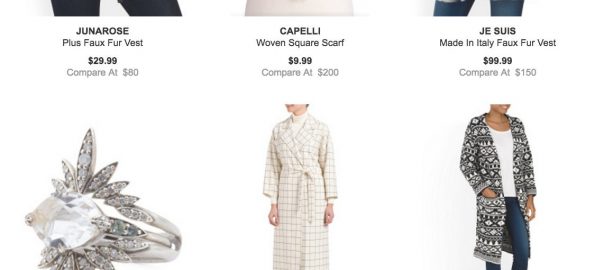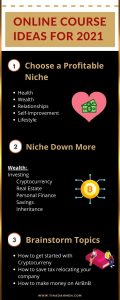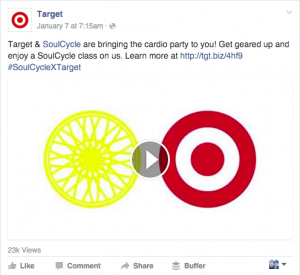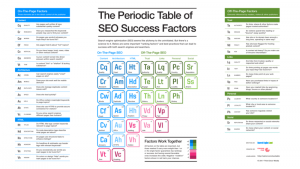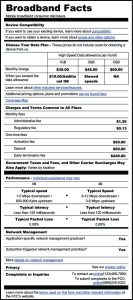The grass is always greener on the other side of the fence, right?
That’s the mentality of comparison shoppers. If they look hard and long enough, they will find a better value. If they don’t look around, they’ll miss out on greener grasses.
Today, the term “comparison shopper” describes the majority of consumers, especially those online. If you’re running an eCommerce or SaaS company, you absolutely must be optimizing for comparison shoppers.
How Many People Are Comparison Shopping, Really?
Consumers 25-34 lead the way in mobile usage in-store, according to Omnico Group. They use their phones to compare prices, read reviews, engage with companies on social media, text friends for recommendations, etc. while they’re in physical stores.
In fact, 72% of millennials research their options online before going to a store. 55% of shoppers say that online reviews influence their buying decisions.
Given the number of people turning to the Internet to comparison shop traditional commerce products, imagine how many people are comparison shopping when it comes to online products and services.
According to research from UPS, 57% of shoppers abandon carts to comparison shop.
How Are Consumers Comparison Shopping?
While the number of ways consumers are using the Internet to comparison shop are endless and unique for each person, there are three core methods to consider…
- Review sites.
- Comparison engines.
- Exploring your alternatives and competitors (via Google, typically).
Whether it’s an entire site dedicated to product reviews or something as simple as product reviews on Amazon, consumers want to know what their peers think of products they’re interested in. If you’re a member of ConversionXL Institute, you will know that…
98% — nearly ALL — consumers prefer reading reviews before making a purchase decision. Since online reviews are such a powerful influence in consumer behavior, eCommerce sites should be utilizing product reviews in the smartest way possible.
Comparison shopping engines curate product information and display that information to consumers searching for relevant queries. Retailers can submit their product information, including price, shopping options, product guarantees, etc. Consumers can then compare all of their options and choose the retailer that offers the best deal.
Finally, consumers will put in the effort to explore alternatives to your product. Some will only do a simple “Product X alternatives” Google search while others will be willing to make a list of your top competitors and manually compare the offerings.
What Does That Mean for Online Businesses?
So, what does how consumers comparison shop mean for online businesses? Two things, primarily: consumers will do just about anything to get your lowest price and you have to know your competition inside and out.
1. Customers Really, Really Want the Lowest Price
Seems obvious, right? People want to pay the lowest price. What’s surprising is the lengths they will go to to ensure they do, in fact, pay the lowest price. According to Mindshare North America…
- 47% of millennials will purposely leave items in their shopping cart in hopes that the retailer will reach out with a promotion.
- 39% of millennials clear their online search history to get better prices from online sellers.
- 26% of millennials have purposely entered a fake birth date to receive a discount.
- 70% of millennials search for promo codes online before purchasing.
- 64% of the surveyed population will wait to buy until it goes on sale.
- 39% of millennials sign up for price tracking services to get an email when prices drops on the items they want to buy.
This is an interesting take on an obvious concept. Not only do consumers want the lowest price, they want the lowest price the retailer offering the lowest price can offer.
Be careful how you address this “need for savings” mentality because it can backfire like it did for T.J.Maxx, who faced a lawsuit for misleading customers with comparison prices on tags…

Apparently, the couple took legal action when they realized the listed “compare at” prices are not necessarily the actual retail price, they’re estimations from the T.J.Maxx staff.
2. Be Aware of Your Competitors
Being aware of your competitors does not end with being aware of their prices. In fact, you’re also competing on…
- Customer service.
- Features and benefits.
- UX.
- Integrations.
- Stock.
- Shipping prices and timeliness.
- Satisfaction guarantees.
…and much more, depending on the consumer’s needs.
What should you compete on if price is out of the question? According to a recent report, there’s plenty of competition to be had. While overall satisfaction with online shopping is high at 77%, it drops below 40% when consumers are asked about flexibility to choose delivery date, flexibility to reroute packages and green shipping.
But the comparison factors don’t end there…

Here’s a great example of non-price comparison. Bloc, an online education platform, compares their weekly workload to the competition’s…

As well as how much the consumer will learn from each program…

If you have a great product and offer real value, experiment with comparing yourself to the competition right on your site. You’re going to be compared to the competition, regardless. Whatever you do, don’t distort the results… consumers will do their own research.
You don’t have to be cheapest, but make sure the case is made for why you are providing the better value. You can experiment with how you communicate that value and compare it to the competition.
And if you’re not providing the better value, you better be the cheapest.
How to Optimize for Comparison Shoppers
Applying all of these principles is easier said than done. Again, the landscape is so varied that the options are limitless. However, there are four high-value activities you can get started with right now: submitting to comparison sites, retargeting, SEO and retention.
1. Submit to Comparison Shopping Engines, Coupon Sites, etc.
Most comparison shopping engines operate in a similar manner. Here’s the basic process…
- Put your product information (name, price, description, image, manufacturer, etc.) into a spreadsheet and export it as a CSV file.
- Make sure your file meets the comparison engine’s unique requirements and then submit it.
- Once the file is processed by the comparison engine, your products will be displayed to the audience.
- You will be charged for every click.
You’ve likely seen a few comparison engines before, whether you’ve realized it or not. Here’s Google Shopping…

And NexTag…

And PriceGrabber.com…

As you can see, they all follow a basic prototype and work in a similar way. Still, pay attention to the details because file requirements, billing processes and copy / image requirements change from engine to engine.
Mark Hayes, Director of Communications at Shopify and co-author of 50 Ways to Make Your First Sale, has some words of caution before you dive into comparison engines…
 Mark Hayes, Shopify:
Mark Hayes, Shopify:
“This gets into a really dicey world and it’s important to understand three critical things before you ever go down this road:
- If you decide that you want to be the ‘low price leader’ in your industry, you generally end up fighting a war racing to the bottom. The bottom being rock bottom prices. You can really hurt your business by restricting much needed cash flow.
- Your brand tends to highlight your unique selling proposition as the ‘cheap website’. And the problem with that is you will have many other competitors who are doing the exact same thing (having low prices) – resulting in a position where you don’t stand out.
- If you think about the type of users that use these shopping engines, they are typically bargain hunters, who are not always the best customers to have. All they tend to care about is who has the lowest price – and will jump ship to another competitor as soon as a ‘better deal’ comes up elsewhere.” (via Shopify)
Be careful with this tactic, tread lightly. Start by submitting one or two of your products to a comparison engine to avoid “racing to the bottom”, as Mark puts it.
You’ll want to experiment with…
- The number of products you offer.
- The specific products you offer.
- The size of the price reduction.
Aside from product experimentation, there is also engine experimentation. They’re all different sites with different audiences. Just like you might have more success with AdWords than Facebook Ads, you might have more success with NexTag than Google Shopping.
Mark explains it well…
Mark Hayes, Shopify:
“Certain comparison shopping engines will have a better ROI (return on investment) for your business than others. The only way to know which ones will yield the best return is to try each one.
Certain sites will work better for the types of products that you sell over others. For example if one engine has a lot of competitors then you have a good idea that the targeted traffic you need is there. On the other hand, if there are no competitors there might not be the traffic you need, but you’ll get all the sales if there are any.” (via Shopify)
Also, note that there are some free engines that you can work with, but they are much more crowded.
2. Retargeting Is King
Abandoned carts happen… a lot.

According to research, it happens for a number of different reasons…
- Presented with an unexpected cost (56%).
- I was just browsing (37%).
- Found a better price elsewhere (36%).
- Overall price too expensive (32%).
- Decided against buying (26%).
- Website navigation too complicated (25%).
…the list goes on.
What happens after those potential buyers are gone? You’ll never know unless you start retargeting cart abandoners.
Sujan Patel of Web Profits proves you don’t need to include a discount in your retargeting ad…

There he is alongside some EDEN lyrics I was looking up. No discount, no special offer.
Here’s another example, this time from the eCommerce space…

(Note: Free shipping is a standard offer for MVMT, not a promotion.)
As another example, Perfect Audience reminds me of their $ 100 free trial credit, which is a standard offer…

You can leverage existing benefits and values without providing an additional discount or deal.
That said, an average of 54% say they’ll buy the same goods they’ve abandoned if they’re retargeted with exclusive discounts, so it’s something to consider, especially if you’re currently running a promotion (something seasonal, for example).
Just make sure you’re doing cart abandonment retargeting right. 68% of millennials and 64% of all adults say it’s annoying to see online ads for a product repeatedly. Then again, that’s what people say about popups and we all know they can work extremely well.
3. Get Ahead of the SEO Game
Inevitably, consumers will turn to Google to find out which product from which site is more valuable. That means you should consider experimenting with…
- Running AdWords ads on key terms shoppers might use (e.g. “landing page builder”).
- Running AdWords ads on key terms comparison shoppers might use (e.g. “Unbounce vs Leadpages” or “Leadpages alternatives”).
- Creating dedicated landing pages that will organically rank for the terms above.
Now, creating a page that compares your own products is fairly commonplace. Anyone who has compared computers or cameras from Best Buy online knows this. As Buffer demonstrates, it happens in SaaS, too…

But creating a page that compares yourself directly to the competition is less common. Comparing yourself directly to your competition is less common. Typically, you’ll see this on web hosting sites. However, as you can see via this Versa Tables screenshot, that’s not a restriction…

Meagan French of Lotus Growth explains a comparison strategy that she’s had success with…
 Meagan French, Lotus Growth:
Meagan French, Lotus Growth:
“You can actually leverage your competitors’ cachet and branded traffic to increase your own conversions.
One of the most effective and compelling ways to steal your competitors’ customers is to go head to head with them on a landing page specifically designed to do just that.
When you’re going head to head against a Goliath in your space, stack the deck in your favor by owning the organic search results, and if you can afford it, the paid results as well. Optimize your landing page for ‘your product vs their product’ and ‘their product alternative.’
If you don’t dominate these search results, your competitors and other bloggers will. You’d be surprised how many SaaS companies put little to no effort into comparison marketing and reputation management, leaving customers on the table.” (via TheNextWeb)
For example, here’s what comes up for the keyword “Wufoo”…

See that organic Formstack link? If you click it, here’s where you end up…

Alright, here’s another example. This time, we’re looking at results for the keyword “salesforce alternatives”…

There’s a bit more competition this time. First we find the SugarCRM ad, which takes a slightly different approach than Formstack…

After SugarCRM, we find the Nutshell ad, which takes you here…

Womp, womp.
Nutshell isn’t going to convert comparison shoppers with, “Hey, we’re an alternative, use us instead of the industry Goliath.”
Take the time to build that dedicated landing page or two or three. Then, do your best to own the organic results for comparison keywords. If you can, start experimenting with AdWords as well.
4. Don’t Forget About Retention
The average consumer’s propensity to comparison ship and be hyper price-aware means you have to be continuously focused on retaining existing customers. We’ve written an entire article on optimizing for retention, which you should take 5-10 minutes to read through.
Why? Because comparison shopping doesn’t end after that first conversion. Before a past customer buys from you again, there is absolutely no guarantee they will not start the comparison shopping process again. The numbers above indicate strongly that they will.
Here’s where it gets interesting.
The average eCommerce store generates 43% of its revenue from repeat purchases. At best-in-class stores, that number is closer to 80%.
70% agree it’s cheaper to retain a customer than acquire one and 49% agree that they achieve better ROI by investing in relationship marketing over acquisition marketing.
Yet, 22% say they don’t do any relationship marketing.

For SaaS, we all know churn is a huge issue. The space is crowded and new companies are popping up daily, so SaaS is certainly not exempt from this need for retention.
A recent report from Adobe revealed that online retailers spend 78% of their budget on search and display ads while approximately 41% of their revenue comes from existing customers, who make up just 8% of their website visitors.
As a result, European retailers have to recruit seven new customers to equal the repeat purchase value of a single existing customer, while US retailers have to recruit five.
Your job of assuaging comparison shoppers’ fears is not done after that first purchase. Continue to remind them that you’re the most valuable option, especially via your retention email series.
Conclusion
Spend the time to identify the value you provide that makes you the best option. Highlight it again and again, on your own site and on third-party sites that comparison shoppers rely on.
Here’s what you need to know to get started…
- 57% shoppers abandon carts to comparison shop via review sites, comparison engines, Google, etc.
- Shoppers go to great lengths to ensure they’re getting the lowest price they possibly can.
- But competing solely on price can result in a race to the bottom. There are plenty of other factors to compare (e.g. UX, stock, shipping prices).
- Experiment with submitting 1-3 products to the various comparison engines.
- Use retargeting to re-engage consumers who abandon their carts. Experiment with reminding them of existing value (e.g. free shipping) and offering a discount.
- Stay ahead of the organic and paid SEO game. Build dedicated comparison pages for your competitors and optimize them for comparison keywords (e.g. “salesforce alternatives”).
- Continue to remind customers that you’re the most valuable option via retention emails.
(131)
Report Post